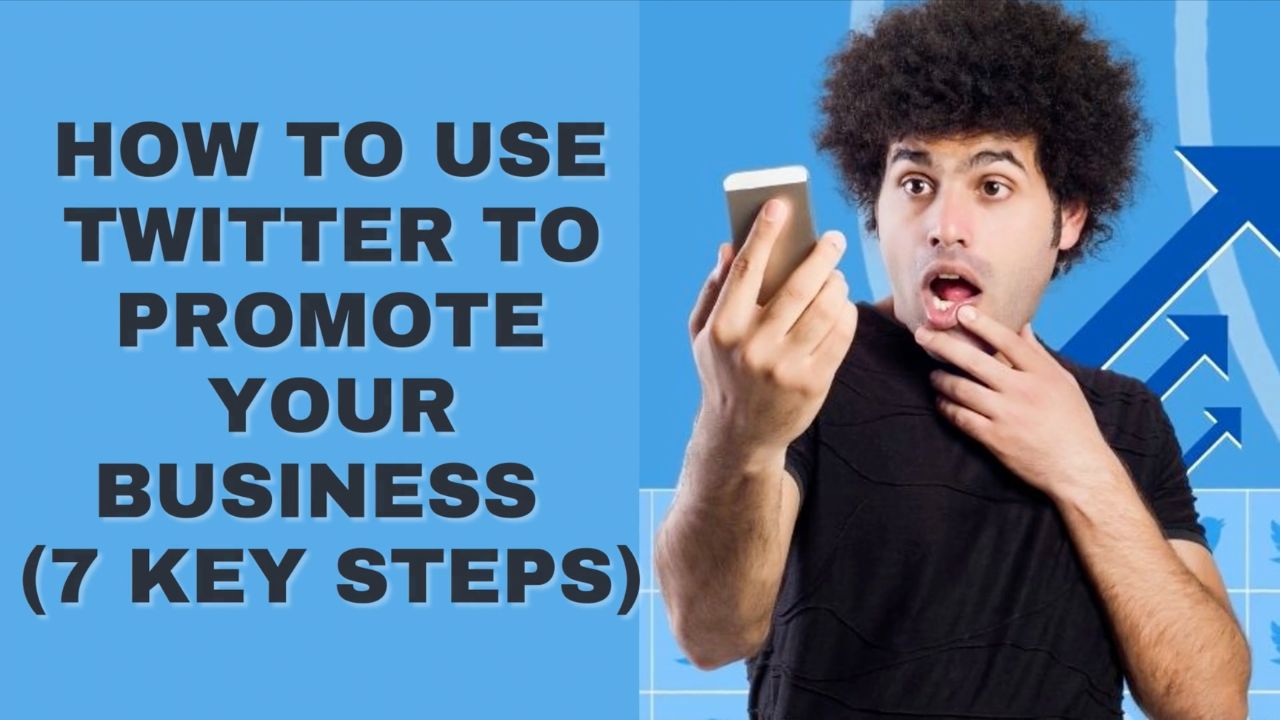X is one of the most powerful social media platforms available, and as such can help you:
- Promote your business
- Reach a wider audience with your message.
But where do you start?
This post shows you exactly how to use X to promote your business, including how to:
- Optimize your profile for maximum impact
- Add value with your content (and optimize it)
- Measure your results so you can see what's working or not
- Use X’s paid advertising options.
Ready to dive in?
Let’s start with why you might want to promote your business on X in the first place...
Why Promote Your Business on X?
In terms of stats, X has approximately:
- 336 million monthly active users
- 260 million users on the platform daily.
While smaller than platforms like Facebook and Instagram, they're still big numbers and its users tend to be more:
- Affluent and educated
- Open to commercial messaging.
In addition, X is particularly valuable if your target market includes users in the US or Japan, with a disproportionate number of users from those countries.
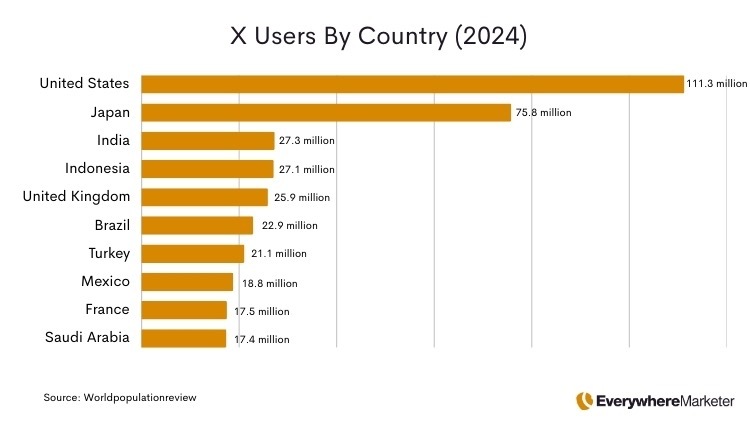
7 Key Steps for Promoting Your Business on X
1. Optimize Your Profile
Your profile on X reflects how you appear on the platform, both via your posts and when people view your account directly.
Ensuring this represents your brand in an optimal way is an important foundation for everything else you do on X.

There are a few main components to your profile as follows…
Profile Picture
Starting with your profile picture, make sure the images on your profile are high quality and represent your brand well.
The profile picture is what appears in a circle on your profile page, and alongside each post.
Here’s an example from one of Elon Musk’s other businesses:
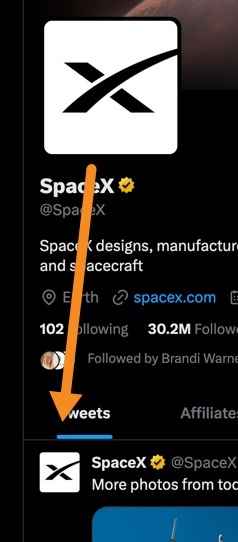
Note that your profile picture will appear in a circle, unless you have a business account and have signed up for X Premium.
The recommended dimensions for a profile picture on X are 400x400 pixels, and you can upload images up to 2MB. JPEGs, GIFs and PNGs are all acceptable.
Header Image
The header image is what appears right at the top of your profile.
Use a picture that you believe best represents your business.
It can of course be adjusted at any time, and can help promote your business on X in different ways. For example, it might be used to reflect current marketing initiatives, or to focus on particular projects your business is working on.
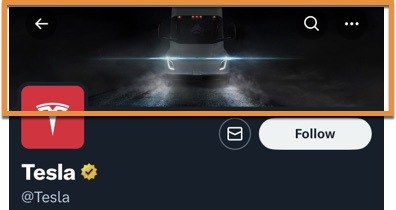
Remember this will show at different resolutions on different devices, and not everything in the image may be visible when viewing it on a particular device.
The recommended dimensions for a header image are 1500x500 pixels.
If adding text to the image, don’t place it within 60 pixels of the top or bottom of the image or it could be cropped.
The same rule applies for important graphical elements.
Bio
Write a bio that accurately describes your business, and what you stand for as a brand.
This can be up to 160 characters long, but that doesn’t mean you have to use them all up. Sometimes just a few words can sum it up nicely.
Think about the value your brand brings to the world, and the benefits people get from doing business with you.
Link
Include a link back to your website so that visitors interested in finding out more about you can do so.
This might be a link to your home page or to a suitable landing page.
The link will be displayed underneath the text for your bio.
Location
If you represent a business serving a particular geographic area, or otherwise want to make it clear where you’re based, then adding your location to your profile can be useful too.
2. Use Content to Build Relationships, Trust and Visibility
Of course, for all the time you might spend perfecting your profile, it’s worth little if no one actually sees it.
And that’s where posting content comes in.
Each time you post, more people will see your brand and potentially engage with your content, possibly even following you if it aligns with their interests.
Every time you post on X, more people see your brand and potentially engage with you. Use your content to build relationships, trust and visibility.Click To Post OnYour organic usage of X is important even if your primary intention is to use the platform as a paid channel (which we explore more in #7 below).
If you’re regularly showing ads but users see an empty-looking, inactive profile, it destroys trust and credibility and negatively impacts the effectiveness of those ads.
With your organic posts, your primary aim should be to create content that’s interesting, engaging and informative for your audience.
Here’s a quick overview of how to make engaging social media posts, including for X (click here for the full guide):
Create different types of posts on X that keep your audience interested, including:
- Text-based posts…
- Posts using visual media such as images and videos…
- Links to content you may have published elsewhere (such as your blog and other content channels)...
- Links to relevant third-party content…
- Reposts from other relevant profiles.
However, try to keep your posting regular and consistent. This is what creates the most positive results, and helps keep audiences engaged.
Regular, consistent posting is what creates the most positive results by keeping audiences engaged. Create a regular flow of posts by systematically repurposing content.Click To Post OnThe easiest way to do this is via a social media posting schedule that takes advantage of repurposing content you’ve already published on other channels to create a foundational flow of content published through your profile.
This is best done via an effective content repurposing workflow so it’s all systematized and ‘just happens’ rather than requiring constant management.
Then, layered on top of this type of content, you can layer in other types such as reposts from other relevant users, industry news and insights, marketing-related posts (such as a current promotion) and so on.
3. Optimize Your Content
To ensure your posts on X get the most reach and engagement, and help to promote your business to best effect, optimize your content accordingly, including use of the following…
Hashtags
Hashtags help to immediately indicate what your post is about, while attracting a wider audience who are following particular topics.
Here’s a guide to how hashtags work on X.
Social Meta Tags
When posting a link to content on your blog for example, you can tell X to automatically pull in appropriate media to help your post stand out visually in the feed.
This is done by adding some special code to your site called social meta tags. For X specifically, this is done by using what are called X cards.
Here’s an example of an EverywhereMarketer post, where X cards are used behind the scenes to tell X what image (and image size) to use:

The code to do this looks a bit like the following:

Want to know how this works? See this post for full information on how to use and apply X cards, including the exact code you need.
4. Engage With Your Audience
As well as posting content, engaging with your followers is a crucial part of promoting your business on X.
Ways you can do this include:
- Responding to messages and posts from followers…
- Reposting posts from other users
- Liking posts…
- Getting involved in X chats…
- Using posts to ask questions and start conversations.
Keep a regular eye on your X account so that posts can be responded to promptly, thereby building relationships while increasing confidence and trust in the ability of your brand to deliver value and look after customers.
Engaging with followers on X is just as important as regularly posting when it comes to promoting your business on the platform.Click To Post On5. Monitor Your Brand
Are you watching out for when your brand is mentioned and what people are saying about you?
This is an important part of promoting your business, and delivers some important key benefits:
- You gain important insights into how your products and services are perceived…
- You’re able to respond to any negative feedback or comments promptly…
- You have the opportunity to reward those spreading the word about your business in a positive way.
So how do you actually do this in practice?
One way is to set up alerts for your brand name and related keywords using tools like Hootsuite’s Brandwatch and Mentionlytics (while also monitoring other social media platforms in a similar way).
Most such tools allow you for example to create custom streams that show all the posts (and other social posts) that mention the keywords you want to be monitored such as your brand name.
6. Measure Results
Of course, you need to be able to measure how your activities on X are performing, so you know how your efforts are paying off, as well as be able to test different approaches and judge their effectiveness.
Metrics you can measure include:
- Your follower count…
- Your engagement rates such as the number of comments, likes and reposts…
- Impressions and reach.
One way to measure these is to use X Analytics, accessible via the More menu.
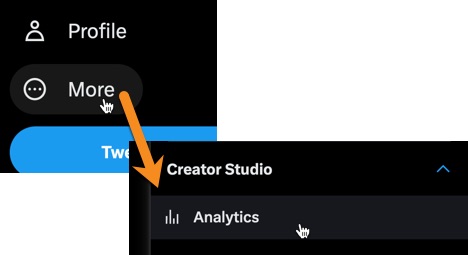
There are also multiple third-party analytics tools available that can add important additional insights, such as Sprout Social and Iconosquare.
To get the best results, set some goals for your X strategy and then track your progress towards them. This helps you focus on activities that will help move the business forward, while increasing motivation to do so as you start to see progress..
7. Venture Into Paid
Finally, you can’t talk about using X to promote your business without mentioning the platform’s paid advertising options, such as promoted posts and follower ads.
For example, promoted posts mean you can reach a much wider audience, while targeting exactly who you want to see your posts.
The good news is that we have a full guide on how to use X ads that details the 5 simple steps to follow to get started, as well as more advanced tips on how to advertise successfully on the platform.
Watch the following quick overview, and then access the full guide here.
Frequently Asked Questions
Why should I promote my business on X?
X users tend to be affluent, educated, and open to commercial messaging, making it valuable especially in the US and Japan.
How can I optimize my profile to promote my business on X?
Optimize your profile on X by updating your picture, header, bio, link, and location to accurately represent your brand.
What are some key steps to engage with my audience on X?
Engage with your X audience by responding to messages, reposting content, liking posts, joining chats, and asking questions to start conversations.
How can I monitor my brand on X?
Monitor your brand on X by setting up alerts for your brand name and related keywords using tools like Hootsuite's Brandwatch or Mentionlytics.
How can I measure the results of my business promotion efforts on X?
Measure your X activities using Analytics in Creator Studio, tracking metrics like follower count, engagement rates, impressions, and reach.
To Conclude
Learning how to use X to promote your business effectively allows you to start using the platform to reach new audiences and build your brand.
This post has shown you exactly how to do just that, with 7 steps you need to follow including optimizing your profile, using (and optimizing) content in effective ways, keeping an eye on your metrics, and using X’s paid advertising options.
